The Black Designers Who Shaped Fashion History
These creatives paved the way.
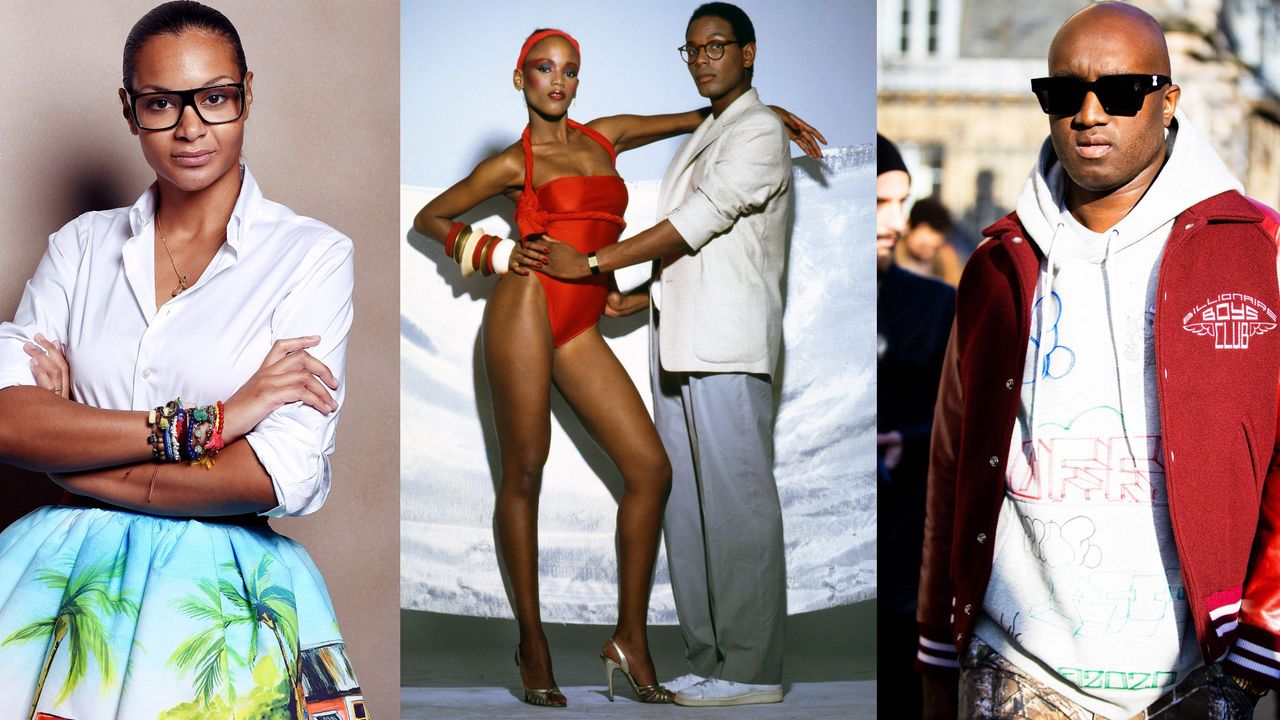
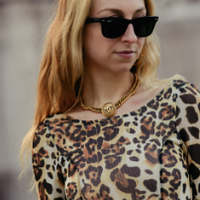
These creatives have changed fashion history, both with their innovative designs and their paving of the way for Black designers and artists. Many of these icons, like Patrick Kelly and Stephen Burrows, used their talent to carve out a position for themselves in the industry that simply didn't exist before. In order to understand the fashion industry as we know it today, we need to look back at the pioneers who led the way.
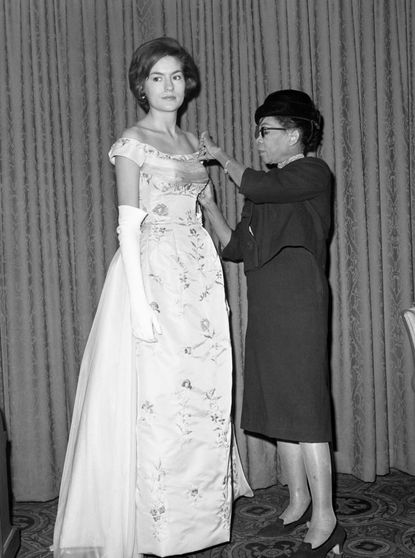
Ann Lowe
Ann Lowe was born in Clayton, Alabama in 1898 and learned her dressmaking skills from her mother, who made dresses for society women in the South. When Lowe was 16, her mother died suddenly. Ann was left to finish her mother's last job: The creation of four ballgowns for the First Lady of Alabama. These dresses launched Lowe's career. She moved to New York and enrolled in S.T. Taylor Design School, which hadn't realized they'd admitted a Black woman so were required to segregate. In 1950, Lowe opened Ann Lowe's Gowns in Harlem and became the go-to dress designer for for the highest of high society—the Rockefellers, the Roosevelts, the du Ponts. She was called "society's best kept secret." Lowe was highly selective with her clientele: “I love my clothes, and I’m particular about who wears them. I’m not interested in sewing for cafe society or social climbers,” she said. She made the dress that Olivia de Havilland wore to accept her Oscar, but her name was not on the label. Unfortunately, this wouldn't be the last time that Lowe failed to receive credit. In 1953, Lowe scored a historical commission when she was hired to create the wedding dress of Jacqueline Bouvier (Jackie O). When asked, Jackie O simply said it was by "a colored designer." Financially, Lowe was taken advantage of by her clientele and by the mid-60s she was in debt, which was paid off by an anonymous friend—some say Jackie O. In 1968 Lowe became the first Black woman to own a store on Madison Avenue.
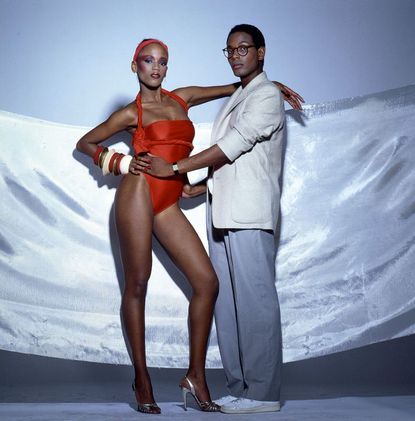
Willi Smith
American designer Willi Smith was the streetwear pioneer. After dropping out of Parsons, Smith began designing for Digits Sportswear, where he met Laurie Mallet. In 1976 he founded his own line with Mallet, WilliWear, which "was a brand that you would see everyone wearing on the street,” Known for his reasonably priced pieces, Smith didn't "design clothes for the Queen, but rather clothes for the people lined up to wave at her". WilliWear was ahead of its time, mixing elements of relaxed fit sportswear with the high-end tailoring. Smith designed WilliWear’s seasonal collections for 11 years, and was the first designer to house womenswear and menswear under the same brand. New York City was his inspiration "Being Black has a lot to do with my being a good designer,” he said. “Most of these designers who have to run to Paris for color and fabric combinations should go to church on Sunday in Harlem. It’s all right there.” At the time of his death due to complications from AIDS in 1987, Willi Smith was known as one of the most successful young designers in America.
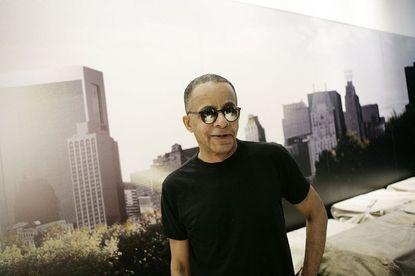
Stephen Burrows
Stephen Burrows was taught to sew by his grandmother. By 1969, Burrows had opened O Boutique; he then started his own ready-to-wear collection. The opening of the "Stephen Burrows" boutique at the iconic Henri Bendels catapulted his career. The collection was bold and bright and drew the attention of Diana Ross and Cher. Burrows' clothes were the embodiment of the era and its glittering Studio 54 nightlife aesthetic. He was drawn to disco and used silk and jersey that reflected movement and color. Burrows crafted a close fit and a slim silhouette, the "Burrows Signature," along with the "lettuce hem," a narrow zig-zag stitch, which became his trademark. Burrows was chosen along with Halston, Oscar de la Renta, Bill Blass, and Anne Klein to represent America in the Battle of Versailles, a fashion face-off against French powerhouses Pierre Cardin, Christian Dior, Hubert de Givenchy, Yves Saint Laurent, and Emanuel Ungaro. It was the night that American fashion stumbled into the spotlight and made history. He garnered a European audience, won the Coty 3 times, and was bestowed “The Board of Directors Special Tribute” by the Council of Fashion Designers of America. Burrows continues to design today.
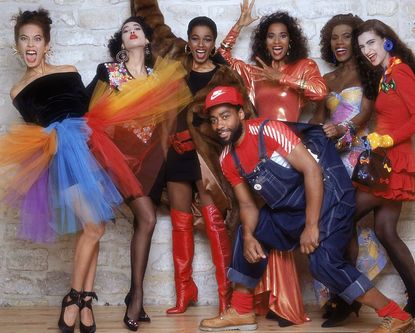
Patrick Kelly
In 1998, Patrick Kelly became the first American designer accepted into the Chambre Syndicale du Prêt-à-porter in Paris, the prestigious French ready-to-wear association. After college, Kelly moved to Atlanta to work as a window dresser at the Yves Saint Laurent Rive Gauche boutique. Supermodel Pat Cleveland encouraged Kelly to move to Paris in 1980. Initially, Kelly struggled in Paris, freelancing for Paco Rabanne and making clothes for nightclubs to get by. His big break came when he became the first American designer sold in French boutique Victoire. This led to a feature in ELLE France and his first show in 1985. Kelly's pieces were beloved by Grace Jones, Madonna, and Princess Diana. He was known for his bright and bold garments, flashy body-con dresses, big buttons, and loud prints. Above all, Kelly was influenced by Black culture: "In one pew at Sunday church in Vicksburg, there’s more fashion to be seen than on a Paris runway." As a Black man designing couture collections with Black women in mind, he was an anomaly. With a background in African history, Kelly used his brand as a way to confront racism by reclaiming symbols of Black oppression, such as the blackface he used as his logo. U.S. retailers refused to buy anything with this logo and his investors asked him to stop using it altogether. He died of AIDS in 1990.
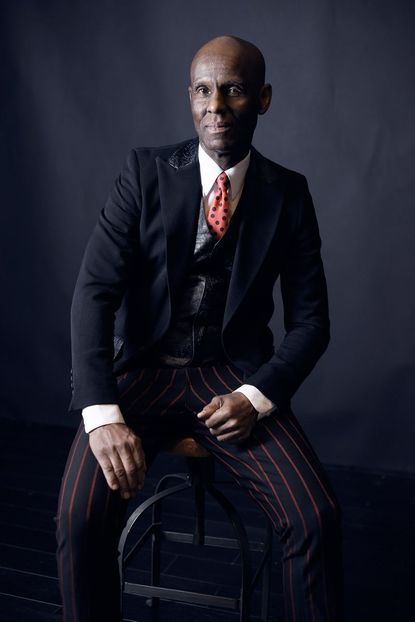
Dapper Dan
Daniel Day, who goes by Dapper Dan, is a Harlem couturier known as the king of "knockoffs." He made a name for himself in the late '80s when he opened his renowned Dapper Dan's Boutique in Harlem. A self taught tailor with a unique style, Dapper Dan provided rap culture with its signature style, reworking traditional luxury-house products to outfit a slew of emerging hip-hop stars and athletes, including the likes of LL Cool J, James Jackson, and Floyd Mayweather. Unfortunately with recognition came lawsuits as luxury brands claimed he violated copyright laws by using their logos. In 1992, Fendi conducted a raid on his boutique, forcing Dapper Dan to close his doors. Over a decade later Dan had an unexpected comeback when Gucci's cruise show in 2017 featured a balloon-sleeved mink bomber jacket very similar to Dan’s iconic 1989 Louis Vuitton version. Just as Dan fans were screaming ripoff, Gucci invited Dan to create a capsule collection inspired by his archive. In 2018, along with Gucci, Dan opened an invitation-only atelier in Harlem. This move solidified Dan as the first true luxury brand out of Harlem.
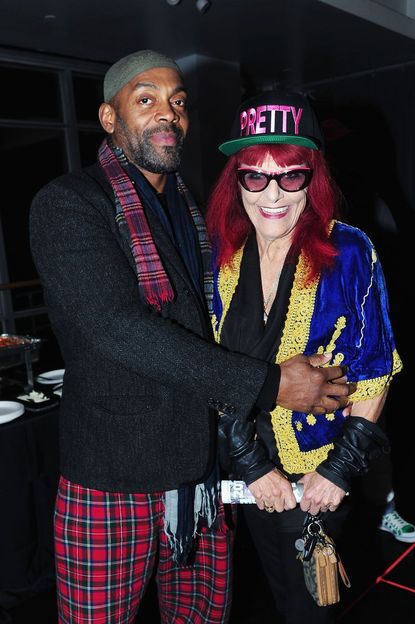
Andre Walker
Andre Walker staged his first fashion show at only 15 years old. In the ‘80s, Walker worked for WilliWear, the industry powerhouse Willi Smith's label. He left New York in the ‘90s and moved to Paris, where he made a name for himself. The New York Times called him a "fashion zelig" because he was truly ahead of his time. Walker was known for his irregularly shaped avant-garde ensembles—coats cut like oven mitts, paper-bag-waist overalls, and pant-skirts. Every magazine wanted to shoot Walker's pieces and top buyers flocked to his presentations. Unfortunately, this was not enough. His close friend, Patricia Field, told the New York Post that few buyers "took a chance on him." In 2000, he won the ANDAM Fashion Fellowship, France's version of the CFDA Award. Five years later he decided to close shop and move back to New York. After shuttering his personal label, Walker served as creative consultant to Kim Jones, as well as for Marc Jacobs for his own line and for Louis Vuitton. In 2014, Walker made a comeback designing under his name with a small collection for Dover Street Market.
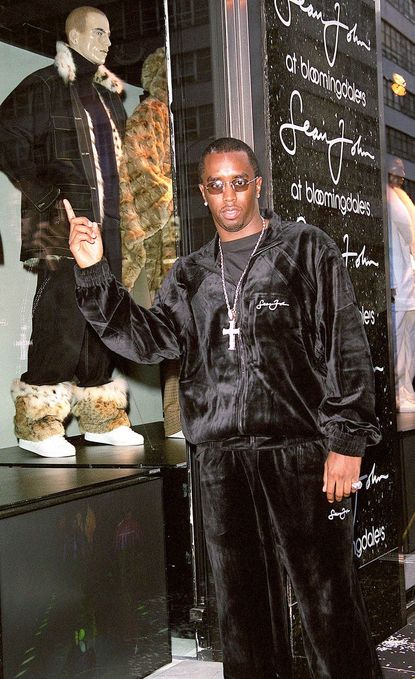
Sean "P Diddy" Combs
Before there was Yeezy and Fenty, there was Sean John by Sean "P Diddy" Combs. Combs launched “Sean John” at the height of his career in 1998, using his celebrity status to change the industry. He noted: "We wanted to give them extremely multicultural and diverse fashion...We brought them fashion-tainment." Combs ran a celebrity-driven label before it was the norm—this was the pre-Instagram era. A master marketer who disrupted the industry, Combs would make TV appearances wearing Sean John and use the tabloids to his advantage. In 2001, Sean John held the first nationally televised runway show. The industry rolled their eyes when a rapper wanted to be a designer—but fast forward six years later, and Combs was the recipient of the CFDA’s Menswear Designer of the Year award. Over 20 years later, Sean John still racks up over $400 million in annual sales. It is sold at Macy’s across the country, and Sean Combs is the blueprint for the celebrity-driven labels that followed.
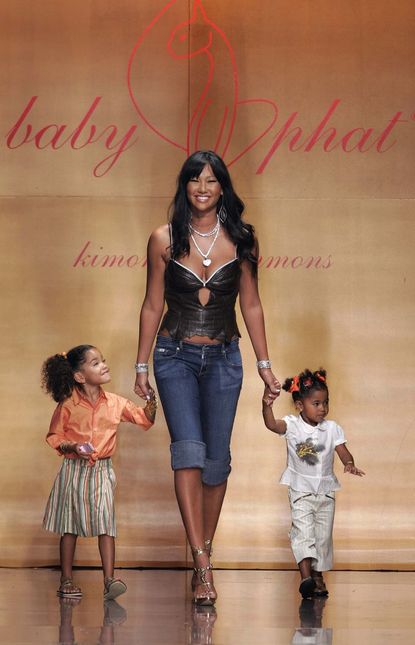
Kimora Lee Simmons
Kimora Lee Simmons began modeling at the age of 13, walking for some of the biggest names in fashion, and ultimately became a Chanel muse. She married music mogul Russell Simmons, who had his own menswear line, "Phat Farm." In 1999, under the "Phat Fashions" umbrella, Kimora Lee Simmons created "Baby Phat” to give women a much-needed voice in the booming streetwear industry. Baby Phat is a brand that defined fashion in the aughts. The label offered short mini skirts, low rise jeans, slinky crop tops, and of course the bedazzled curvy cat logo inspired by Kimora's cat Max. She democratized fashion with her belief that "no matter your size or heritage, what united the Baby Phat girl was a desire to look good, feel great, and do it on a dollar.” Simmons became one of the first Black women to run a billion-dollar company. Nearly 10 years after shuttering, Baby Phat is back under the direction of her two teenage daughters.
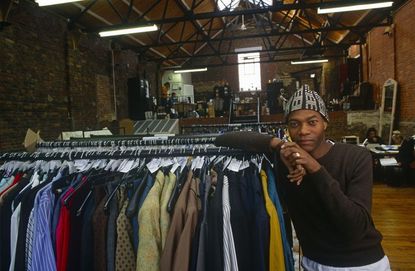
Joe Casely-Hayford
Joe Casely-Hayford was known as one of the most talented designers of his generation. He shaped an aesthetic and broke boundaries by fusing Savile Row tailoring with East End streetwear. His work helped shape a new kind of British culture and international style for the 21st century. Joe Casely-Hayford was formally trained at Tailor and Cutter in London and the prestigious St. Martins School of Art. He debuted his first label KIT in 1984, using surplus WWII tents to make sportswear. With KIT he developed a style identified as “new conservative dressing," or classic with a twist. He was a favorite among rock stars such as Bono and Michael Jackson; Bono appeared on the cover of British Vogue wearing a Casely-Hayford's design. In 2005, Casely-Hayford became the creative director for Gieves & Hawkes, "the tailor famous for its handful of royal warrants and with a reputation for dressing the white establishment." In 2009 he started Casely-Hayford with his son. He died just 10 years later at the height of his career following a battle with cancer.
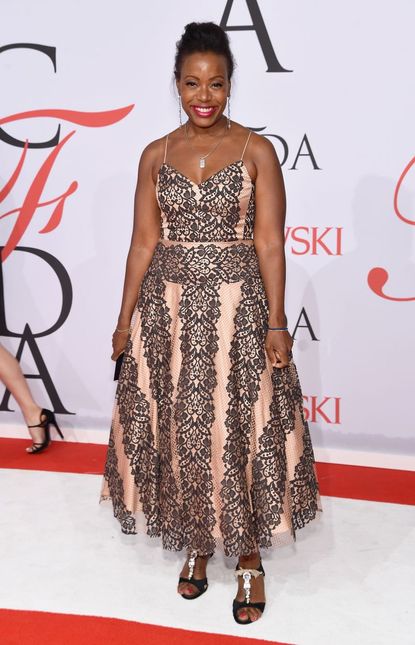
Tracy Reese
Tracy Reese is an American designer who is known for "rich, daring colors and unique prints that are crafted into joyful, feminine pieces for the modern woman." Upon graduating Parsons in 1984, Tracy Reese worked for French fashion designer Martine Sitbon at the small contemporary firm, Arlequin. Reese went on to work for many top fashion houses, including Perry Ellis, where she became design director for women's portfolio. In 1997, Reese launched her eponymous line which received high praise. Her line combined bold hues and prints with modern silhouettes and shapes. She launched her second line, Plenty by Tracy Reese, in 1998. In 2014, Reese launched DRESSES by Tracy Reese, a line of contemporary dresses that can take you from work to a special occasion. Reese is a celebrity favorite, having dressed Michelle Obama, Sarah Jessica Parker, and Taylor Swift. She serves on the CFDA Board of Directors, and is involved in many social causes such as the AIDS Fund Committee for the New York Community Trust.
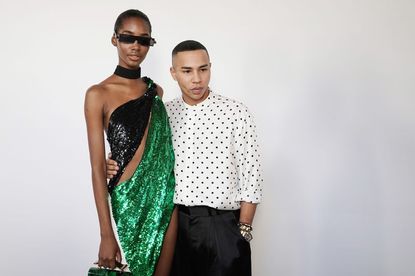
Olivier Rousteing
Born and raised in Bordeaux, France, Olivier Rousteing moved to Paris to attend Ecole Supérieure des Arts et Techniques de la Mode. Rousteing began his career designing at Roberto Cavalli, eventually becoming Creative Director of the womenswear division. After five years at Cavalli, Rousteing moved on to work as a women's ready-to-wear designer for Balmain. He worked closely with Christophe Decarnin, the brand's creative director, and replaced him in 2011. Having grown up in the age of Instagram, Rousteing proved that his youth was his best asset by catering to the digital generation with his social media engagement. Rousteing was one of the pioneers of Instagram marketing with his “Balmain Army” of influencers dressed in the brand’s signature military style. Balmain has had themed Snapchat filters, a personalized app, and a digital flagship store. Rousteing continues to be at the forefront of the digital age as one of the first brands to sign onto Instagram's shopping feature in 2019.
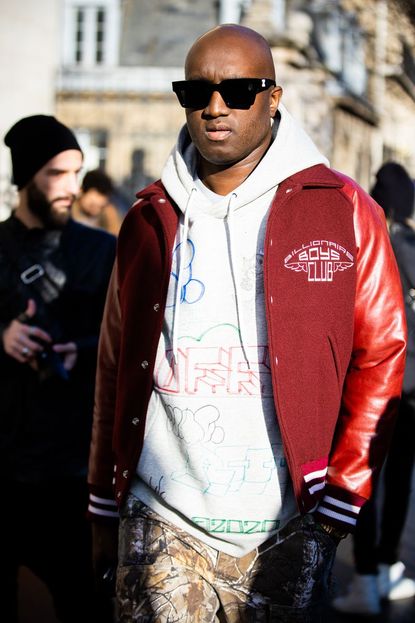
Virgil Abloh
Chicago-born designer, stylist, and DJ Virgil Abloh truly does it all. In 2009, Abloh switched gears from architecture to fashion when he interned for Fendi in Rome and became friends with fellow intern Kanye West. Later that year, along with Don C, he founded RSVP Gallery, a menswear boutique and art gallery in Chicago. He later became creative director of Kanye West's creative agency Donda. In 2012, Abloh launched his first line called "Pyrex Vision," screen-printing his logo on deadstock Ralph Lauren T-shirts and flannels. During this time, he also collaborated with Matthew Williams and Heron Preston on the line "Been Trill." When Pyrex closed in 2013 Abloh started "Off-White," a label described as a "multi-platform creative endeavor." Its main medium is fashion. At Off-White, he combines ideas of streetwear, luxury, art, music, and travel, defining the brand as “the gray area between black and white, as the color Off-White.” The brand quickly became beloved by celebrities and fashion insiders. In 2015, Abloh was a finalist for the LVMH Prize. In 2018, Abloh was named the artistic director of Louis Vuitton menswear collection. Much of Abloh's success is due to his high profile collaborations with brands like Nike.
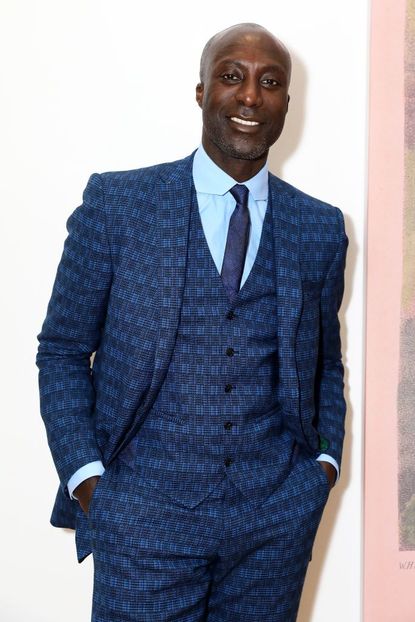
Ozwald Boateng
As a child, British-born Ozwald Boateng was inspired by his father's immaculate suits. At eight, his mother gave him his first suit—a double-breasted in purple mohair. At 14, he found a summer job sewing linings into suits. It was his girlfriend who ultimately got him into designing when he was 16. In 1987, Boateng helped his friend make clothes for a fashion show, and his work received high praise. He sold his first collection to a menswear shop in Covent Garden, which allowed him to open his own studio in London in 1991. In 1994, Boateng was the first tailor to have a show during Paris Fashion week. He then opened a boutique on the famed Saville Row in 1995. Boateng's contemporary approach to menswear design helped to forge a new appreciation for Savile Row and draw in a younger demographic. To this day it remains the only Black-owned store on Saville Row. In 2004, Boateng was named Creative Director of Menswear at Givenchy, specifically hired to "reinvent the French gentleman." Boateng was commissioned by President of the Republic of Ghana to design and orchestrate a show at the 9th Annual African Union summit in 2007. In 2018, Boateng designed new uniforms for British Airways.
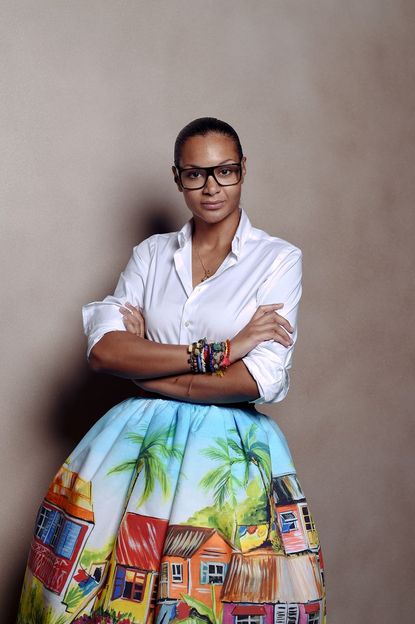
Stella Jean
Stella Jean was raised in Rome by a Haitian mother and Italian father at "a time when the country was completely unprepared for multicultural families like mine...people constantly stopped in the streets to point at us.” But Jean credits her mixed background for her later success: Jean took her father's basic button-down shirts and mixed them with bright fabrics. This led to her main source of design inspiration: combining different cultures. Jean won Vogue Italy's "Who Is On Next?" competition in 2011. In 2014, Giorgio Armani showcased Stella Jean's collection at the Armani theatre in Milan, and she was the first womenswear designer to present in the iconic space. That same year, Jean collaborated with Christian Louboutin on a shoe collection. With high-profile collaborations under her belt, Jean was invited by the UN International Development Organization to join an ethical fashion program. Jean has also garnered an impressive list of celebrity clientele, including Beyonce and Rihanna. Even with all of her global attention, Jean believes fashion shouldn't be exclusive. By inviting craftsmen and artisans to sit front row at her shows, she honors the people who made it all possible.
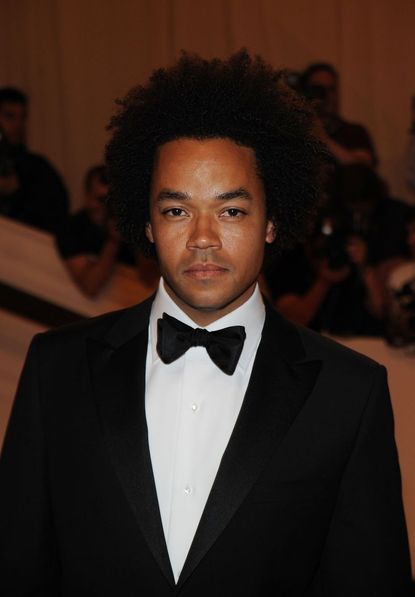
Patrick Robinson
Patrick Robinson made garments to sell to his friends while he was still in high school. After graduating from Parsons, he moved to Paris and worked as a design assistant to Patrick Kelly. Shortly thereafter, Robinson became the Design Director for Giorgio Armani in Milan. In 1994 he moved back to New York and became Senior Vice President of Design, Merchandising, and Marketing for Anne Klein. After spending his career working for other people, Robinson decided to start his own label in 1996. His sportswear line was a success and he was named named one of Vogue's rising stars in 1996. He went on to become Creative Director for Perry Ellis Women’s Sportswear, Art Director for Paco Rabanne in Paris, and head designer for Gap. Patrick Robinson currently designs a sustainable clothing line, Pashko.
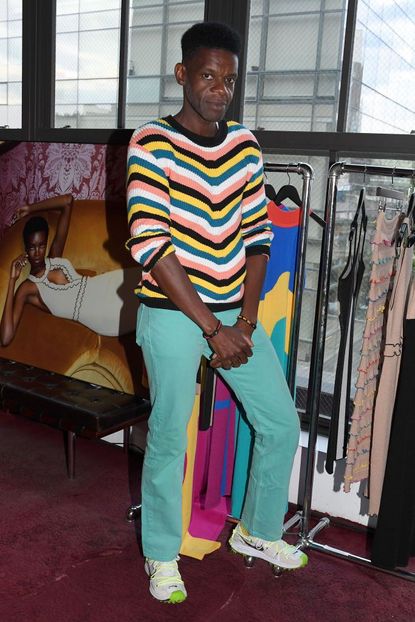
Victor Glemaud
Haitian-born Victor Glemaud was raised in NYC, where he attended FIT. An internship for Patrick Robinson turned into an assistant designer position. After graduation, Glemaud worked as a fashion publicist. When he moved to Paris for his job, his mentor Robinson was there as Art Director for Paco Rabanne. The timing was perfect: Glemaud went back to work with Robinson and was appointed as the Studio Director for Paco Rabanne. Three years later Glemaud launched his own menswear collection—just seven looks that was sold at high-profile boutiques. Glemaud realized that he had a lucrative business on his hands, so he packed up and moved back to New York. To fund his new collection, Glemaud worked as the Style Director at Tommy Hilfiger. Upon leaving Tommy Hilfiger, Glemaud stopped designing completely, opting to travel the world, clear his head, and gain new inspiration. He returned to relaunch his brand and the colorful knit sweaters he's known for today.
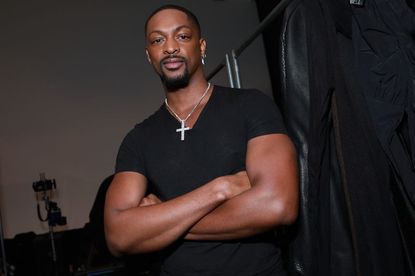
LaQuan Smith
Born and raised in Queens, LaQuan Smith has been making clothes since he was a teenager. At 13, he inherited his first sewing machine from his grandmother when she passed away. He was rejected from FIT and Parsons, but Smith didn't let that stop him. His break into the industry was an internship with Blackbook magazine and stylist Elizabeth Sulcer; his new job gave him access to events and parties where he became his own walking advertisement. Smith would sport his own designs and give away free clothes in order to make a name for himself. At 21, he presented his first collection; André Leon Talley came to his first presentation, as did Sean Combs' mom. Since his first collection, Smith's brand has soared, with a high-profile client list that includes Beyoncé, Rihanna, and Lady Gaga. He has since expanded to mass market with a major partnership with ASOS and a collaboration with Revolve.
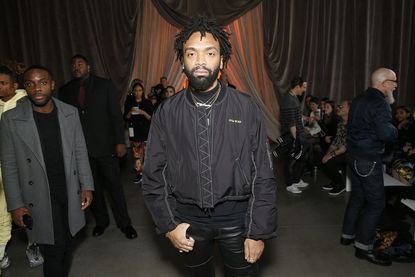
Kerby Jean-Raymond
Kerby Jean-Raymond is the founder and creative director for New York-based label Pyer Moss. Jean-Raymond attended the High School of Fashion Industries in New York, where he interned for Marchesa and Theory. He began his design career freelancing for Marc Jacobs, Badgley Mischka, Kenneth Cole, and Theory; he went on to start his own label Pyer Moss in 2013. In 2015, Kerby-Jean Raymond made Forbes' 30 Under 30 list. The following year was pivotal for Pyer Moss: The brand skyrocketed into the public eye during the S/S 2016 season "when its show highlighted police brutality, referencing the Black Lives Matter movement through use of video, street art and fashion," as BoF reports. In 2018, Pyer Moss landed a major collab with Reebok called "Reebok by Pyer Moss." That same year, Pyer Moss was nominated for the CFDA's Swarovski Award for Emerging Talent for it's F/W 2018 collection. In addition in 2018, Pyer Moss won the CFDA/Vogue Fashion Fund.
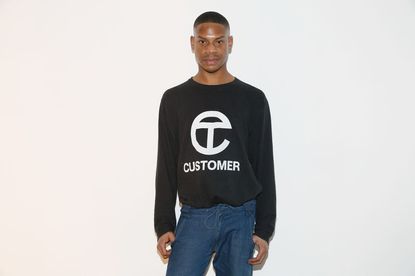
Telfar Clemens
In 2002, Telfar Clemens moved to New York to pursue a modeling career, which led him to create his own collection of deconstructed vintage clothes in 2003. He then started his brand in 2005 as an undergraduate at Pace University. At the time, many of his friends dressed in ways that crossed gender lines, which is why he made his label "Telfar" unisex. Telfar's slogan describes the brand's mass appeal: "It's not for you—it's for everyone." Clemens is inspired by people he sees on the street. In 2017, Clemens won the CFDA/Vogue Fashion Fund award, choosing to invest that money into production for what would become his signature piece. The Telfar Shopping bag, which comes in three sizes, is the brand's best-selling item. It is called the "Bushwick Birkin," and the reasonable price has attracted global recognition.
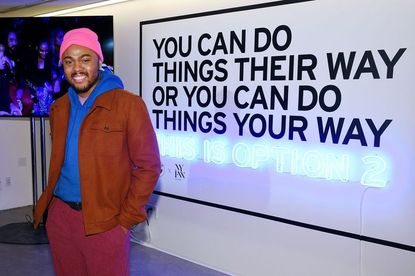
Christopher John Rogers
The industry newcomer making waves, Christopher John Rogers has been named one to watch by many. Robin Givhan put it perfectly: "His work is boisterous, deafening and dramatic. Sometimes it’s extraordinarily, proudly gaudy. He is the fashion industry’s latest obsession." The recent graduate from the Savannah College of Art and Design has a lot of accomplishments under his belt. In 2019, he won the CFDA/Vogue Fashion Fund award, he has been named on Forbes 30 under 30 list. He has also dressed some impressive figures, including Michelle Obama, Lizzo, Rihanna, and Cardi B.
Stay In The Know
Get exclusive access to fashion and beauty trends, hot-off-the-press celebrity news, and more.
Shelby Comroe is the Credits Editor and Fashion Assistant at Marie Claire covering all things fashion and giving credit where credit is due. Check her out @shelbycomroe on Instagram if buying designer handbags is your idea of a retirement plan!
-
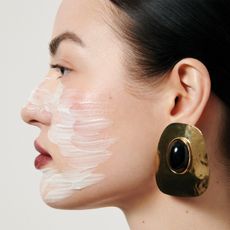 Presenting the 2025 Prix D'Excellence Awards
Presenting the 2025 Prix D'Excellence AwardsThe year's best new beauty products are waiting for you.
By Ariel Baker Published
-
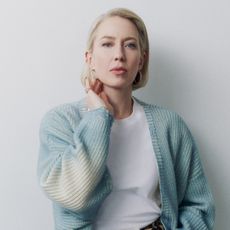 The Wild Ride of Carrie Coon
The Wild Ride of Carrie CoonLaurie's deep-set insecurities come to a head in episode 7 of 'The White Lotus,' allowing the actress to turn a "dark night of the soul" into an illuminating time.
By Jessica Goodman Published
-
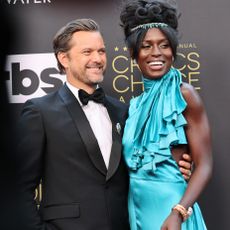 Joshua Jackson Won't Let His Daughter Watch 'Dawson's Creek'
Joshua Jackson Won't Let His Daughter Watch 'Dawson's Creek'"She's going to get all sorts of ideas."
By Amy Mackelden Published
-
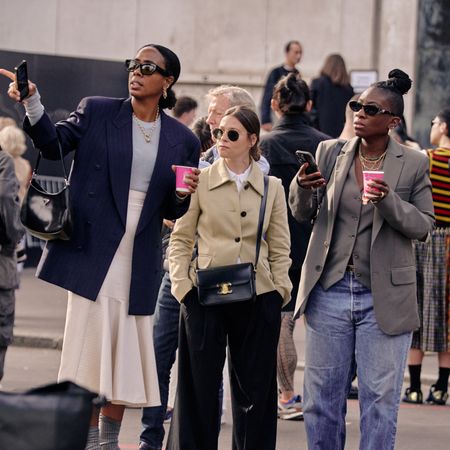 Marie Claire Editors Are Obsessed With This Cult-Favorite Sale
Marie Claire Editors Are Obsessed With This Cult-Favorite SaleSSENSE has everything a fashion enthusiast could ever want.
By Lauren Tappan Published
-
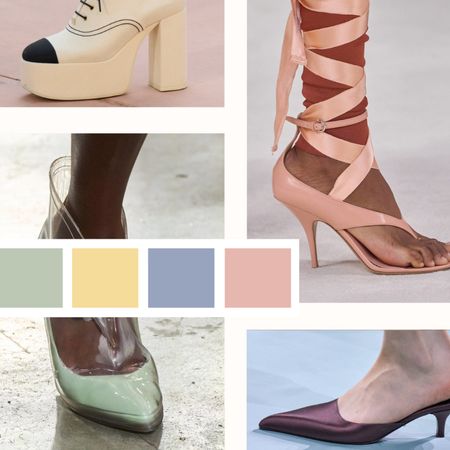 Spring 2025's Candy-Coated Shoe Color Trends Prove Neutrals Are Overrated
Spring 2025's Candy-Coated Shoe Color Trends Prove Neutrals Are OverratedBold pastels and sugar-sweet hues promise to overtake your boring shoe lineup.
By Lauren Tappan Published
-
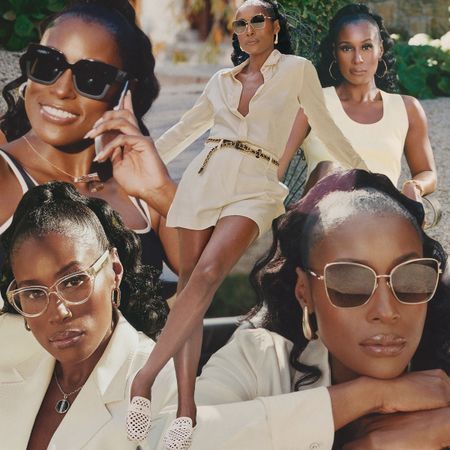 Issa Rae Is Fueling Her Mogul Era With More Me Time
Issa Rae Is Fueling Her Mogul Era With More Me TimeThe key to her success lies in self-care.
By Lauren Tappan Published
-
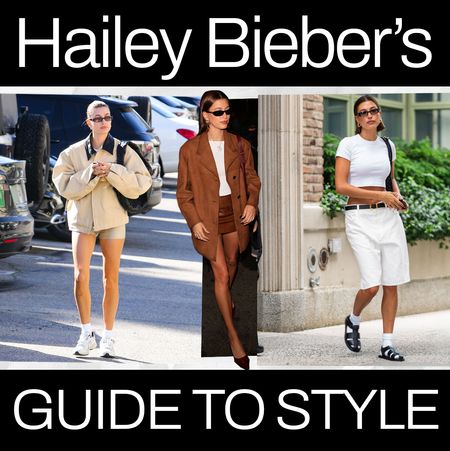 13 Hailey Bieber Outfit Formulas Defining Her Laidback Personal Style
13 Hailey Bieber Outfit Formulas Defining Her Laidback Personal StyleCopy and paste to your closet.
By Lauren Tappan Published
-
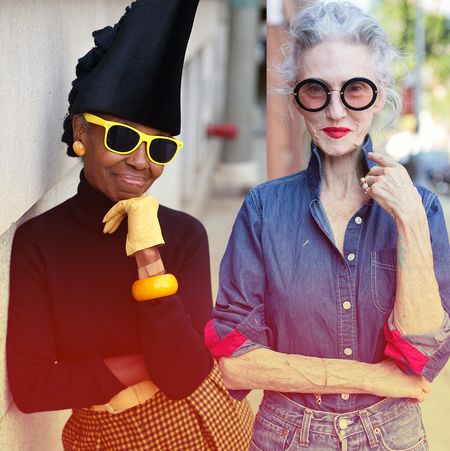 8 Women Over 60 Share Their Age-Defying Fashion Wisdom
8 Women Over 60 Share Their Age-Defying Fashion WisdomThese eight style icons prove that age-appropriate fashion is a myth.
By Emma Childs Published
-
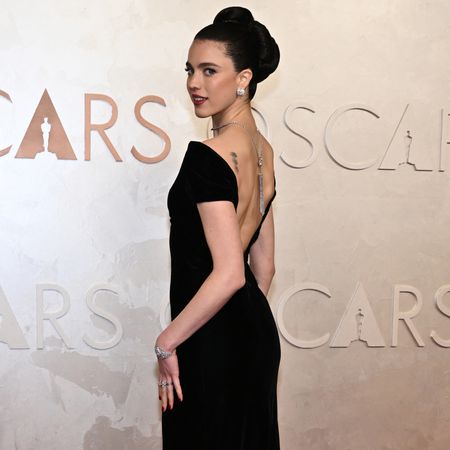 Margaret Qualley's Backless Chanel 2025 Oscars Dress Secretly Nods to 'The Substance'
Margaret Qualley's Backless Chanel 2025 Oscars Dress Secretly Nods to 'The Substance'The backward necklace is the cherry on top.
By Emma Childs Published
-
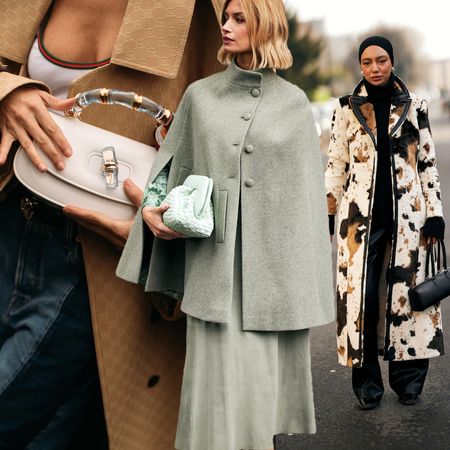 Milan Fashion Week's Biggest Street Style Trends Exude Old-School Elegance
Milan Fashion Week's Biggest Street Style Trends Exude Old-School EleganceThese are the looks worth stealing.
By Emma Childs Published
-
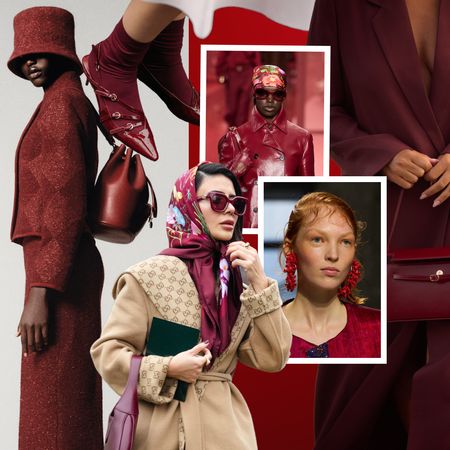 Embrace 2025’s Cherry Red Color Trend With These Delectable Accessories
Embrace 2025’s Cherry Red Color Trend With These Delectable AccessoriesTry the tart shade with accessories like glossy handbags and sweet slingbacks.
By Lauren Tappan Published
